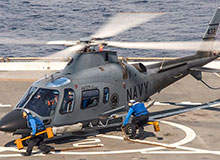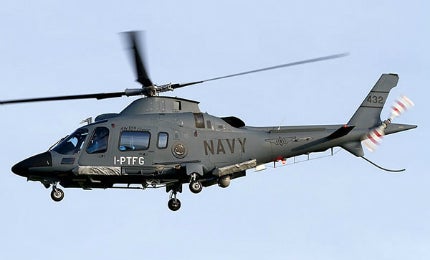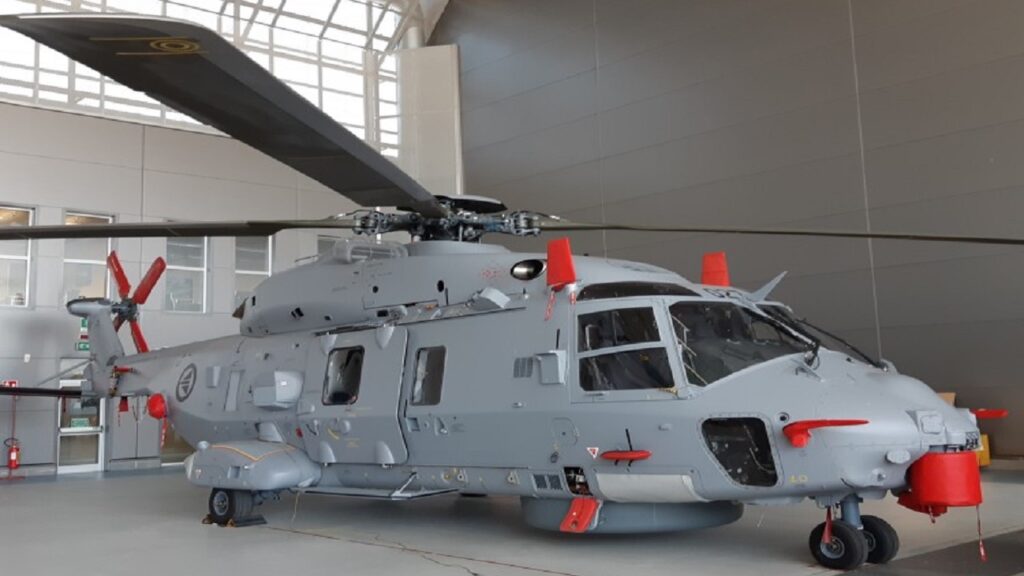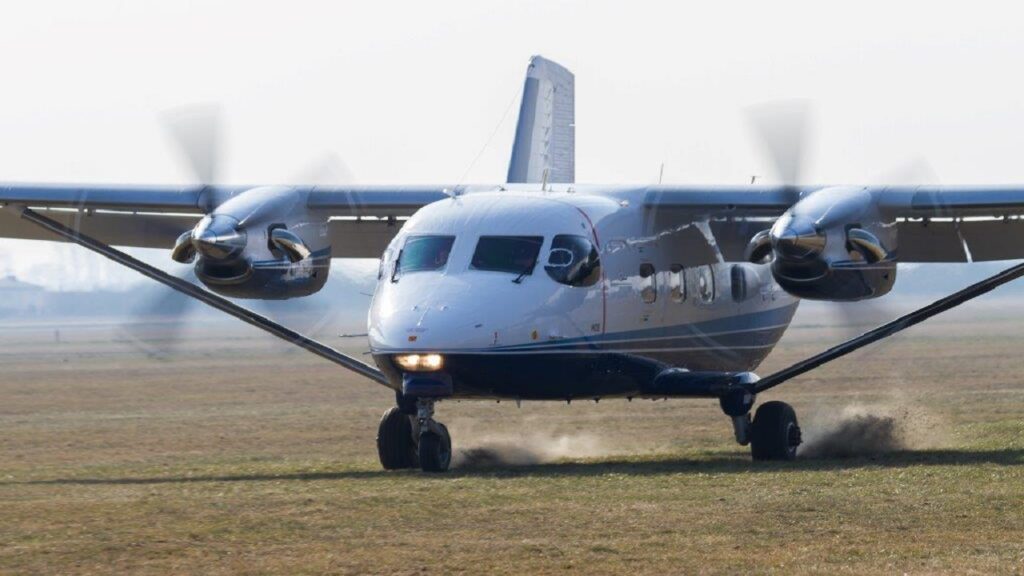

The Philippine Air Force commissioned the first two of eight armed AW109 Power light, twin-engine helicopters in August 2015.
The helicopters are manufactured by Italian company AgustaWestland.
The helicopters will be operated by the Philippine Air Force’s 15th Strike Wing in missions such as close-air support, armed air reconnaissance, forward air control, and armed escort.
AW109 Power can be configured for a range of missions, including search and rescue, law enforcement, air ambulance, coast guard, border patrol, surveillance, passenger transport, advanced training, and emergency medical services.
AW109 Power orders and deliveries
AgustaWestland won a contract worth P3.4bn ($77m) through a public bidding for the supply of eight AW109 helicopters to the Philippine Air Force in November 2013. The first two helicopters were delivered in December 2014.
The Philippine Navy signed a contract with AgustaWestland for three AW109 Power maritime helicopters with an option for an additional two in March 2013. The helicopters are configured for maritime security, search and rescue, surface surveillance and economic zone protection. A contract for an additional two helicopters was signed in February 2014.
The Mauritanian Air Force placed an order for an undisclosed number of AW109 Power helicopters for reconnaissance and border patrol missions in June 2013.
Design and features of AW109 light helicopter
AW109 Power features an airframe made of lightweight aluminium alloys. It is fitted with four blade main rotor and long tail boom with two blade tail rotor. Tricycle landing gear with energy absorbing struts allows safe landing on rough terrains.
The helicopter has a length of 13.4m, a width of 7.8m and a maximum height of 3.5m. The main and tail rotor diameters are 11m and 1.94m respectively.
The helicopter is operated by one or two pilots and accommodates up to seven passengers. The cockpit is fitted with pilot / co-pilot doors and windows with sliders. The cabin has two large sliding doors and double-layer acrylic windows.
With a volume of 3.5m³, the wide cabin can be easily configured to meet various mission equipment. The spacious baggage compartment can be extended up to 2.3m to house mission-specific loads.
The interior is installed with soundproofing, bleed air heater and air conditioning to facilitate comfortable seating for occupants.
AW109 Power can be optionally fitted with a rescue hoist, cargo hook, engine air particle separator, external loudspeakers, pulsed chip detectors, rappelling hooks, retractable light, and Bambi bucket.
Cockpit and avionics
The platform offers high controllability and manoeuvrability when undertaking missions in the most demanding weather and environmental conditions.
The digital, glass and NVG-compatible cockpit is equipped with six liquid crystal instrument displays to provide the aircrew with navigational and flight information, as well as enhanced situational awareness both during the day and at night.
Avionics include three-axis duplex automatic flight control system (AFCS), radar altimeter, weather radar, global positioning system (GPS), moving map, instrument flight rules (IFR), navigation and communication systems, gyrocompass and transponder.
It also includes tactical radios, forward looking infrared radar (FLIR) / low-light television (LLTV) camera, automatic direction finder (ADF), stormscope, emergency locator transmitter (ELT), and cockpit voice and flight data recorder.
Armament
The AW109 Power attack version is armed with .50 calibre machine guns and unguided rockets for close air support and surveillance operations.
Survivability features
The light helicopter‘s safety features include emergency flotation, dual hydraulic boost and wire strike protection systems, snow skis kit / slump protection pads kit, fire extinguishers, a fully separated fuel system, reinforced windshield, rotor brake, and dual electrical systems.
Redundant lubrication and cooling systems are provided for main transmission and engines. Vibration dampers are also fitted to minimise vibration levels.
Engine and performance of AW109 Power helicopter
The AW109 Power helicopter is powered by two Pratt & Whitney Canada PW206C engines, controlled by full authority digital engine control (FADEC) system, or two Turbomeca Arrius 2K1 engines.
PW206C has a take-off power of 477kW, whereas the Arrius 2K1 has a take-off power of 500kW.
The helicopter has a maximum take-off weight of 3,000kg and is equipped with 605l three-cell, 699l four-cell and 835l five-cell fuel systems. It has a maximum cruise speed of 285km/h, a never exceed speed of 311km/h and a rate of climb of 9.8m/s. It can reach a service ceiling of 5,974m with one engine inoperative. The IGE and OGE hover ceilings are 5,059m and 3,596m respectively.
The Global Military Aircraft Market 2011-2021
This project forms part of our recent analysis and forecasts of the global military aircraft market available from our business information platform Strategic Defence Intelligence.
For more information click here or contact us: EMEA: +44 20 7936 6783; Americas: +1 415 439 4914; Asia Pacific: +61 2 9947 9709 or via email.



